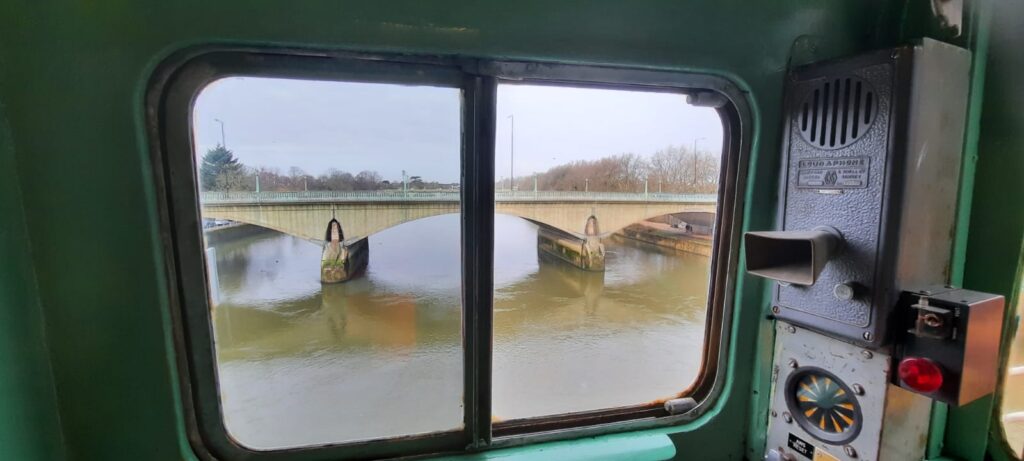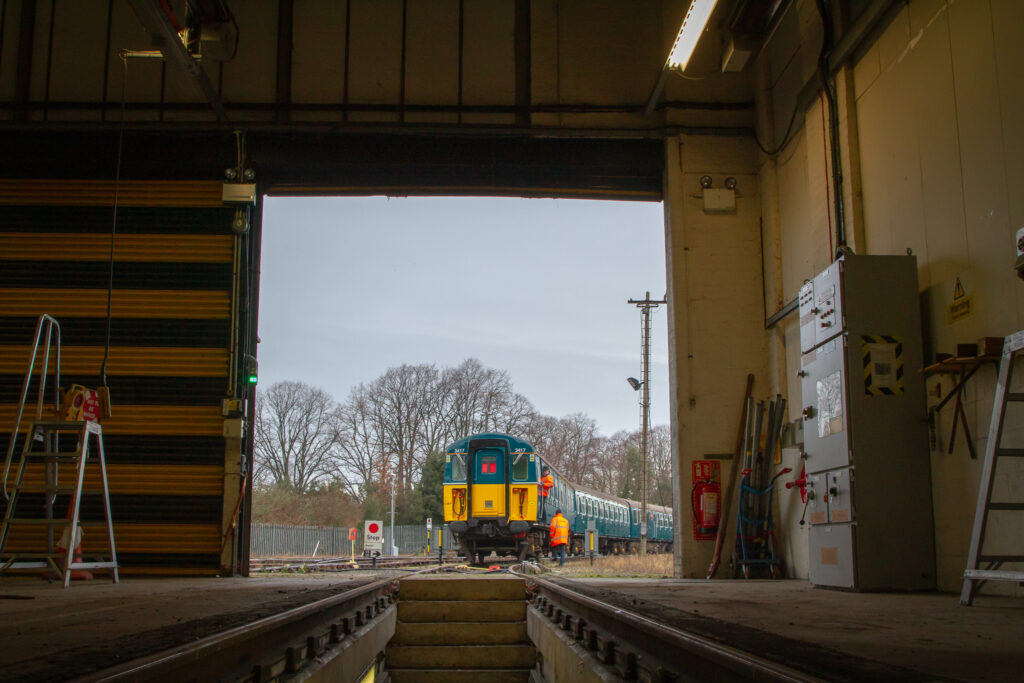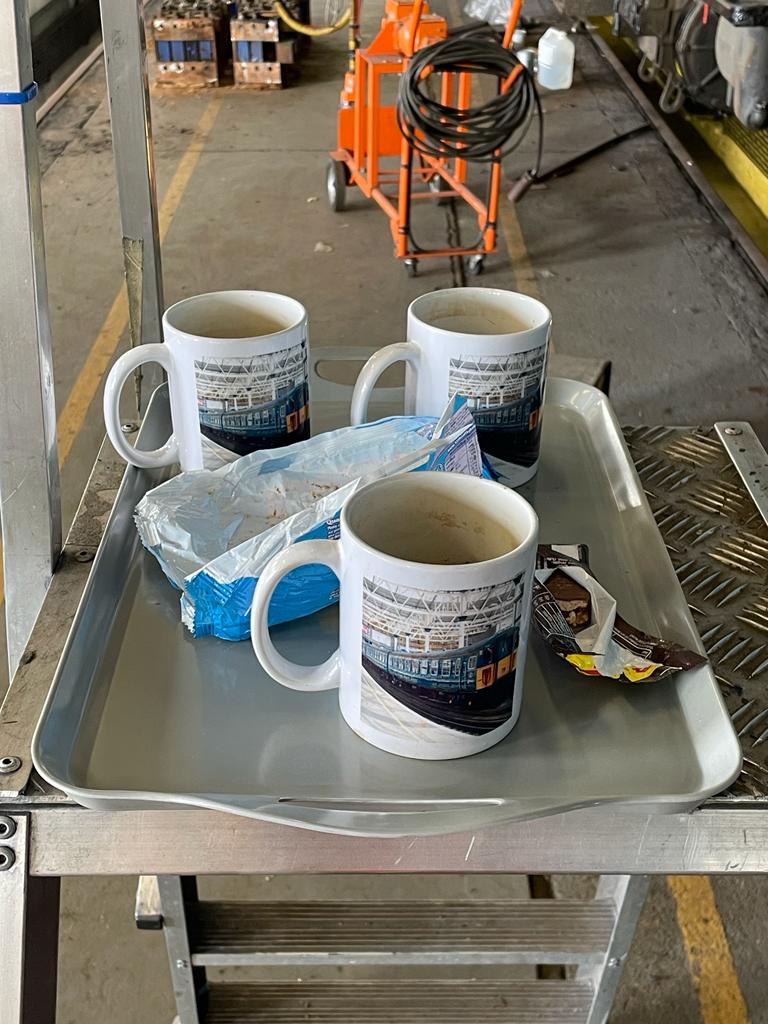Railway preservation isn’t cheap. In fact if you’re going to do things properly it’s bloody expensive. As Buckie is fond of saying “There are two prices for everything – normal and railway. For the railway price, take the normal price, double it and then add a zero.” You need to get specialist contractors in to do certain jobs such as Ultra Sonic Axle testing and putting the unit back into capital stock. All the spares need to be kosher, you need calibrated tools, you need equipment in the back office to allow you to prepare and submit paperwork… It’s a never ending and headache-inducing process but, when you’re aiming to put a preserved train back onto the modern railway, you have to do things properly. It means approved suppliers (more money) and paper trails (more time) and a lot of scrimping and saving (more effort and time). It’s not a recipe designed to allow a Minion to maintain a full head of hair, or at least hair the same colour as it was ten years ago when we started all this nonsense*. So the money has to come from somewhere. Around 9 years ago we launched a crowd funding appeal to inject some money into the coffers. It’s not lie to say that we had a unit, a very small team, some lofty ambitions, few tools, very few spares and an empty shed. At the time I recall standing in the empty shed, scratching my head and wondering what the hell we were getting into. Luckily it turns out I didn’t have anything pressing planned for the next decade….

That crowd funding effort was an eye-opener. We managed to raise just over £12,000 – a staggering sum to us at that stage of the project – and that money was put towards buying raw materials such as trim (we hadn’t even thought of the Trim Shop at that stage), tools and spares that were being disposed of by suppliers such as Unipart Rail in Doncaster. From there we concentrated on encouraging supporters to donate a small amount to the project each month; the ‘Pint For The VEP’ idea that we shamelessly borrowed from the builders of No.61053 ‘Tornado’. As the Scots say “many a mickle makes a muckle”, and so it has proved for us to this day. Our small group of supporters (we’re always open to new donors, folks!) continues to be a vital source of revenue for the project but after the Grand Day Out at Waterloo in January it became clear that if we want to put the unit back into traffic then we were going to need to raise some serious money. I mean serious, serious money. So serious that I had to type that in italics. At Waterloo we gave a taste what the future will hold, we had also shown to the public and to the industry that the quality of our work was up to Big Railway standards. Don’t forget, folks, 3417 was the first slam door EMU into Waterloo in 20 years – and before anyone says “Oi, Potter, what about LUL’s 4TC”, please note that the 4TC is four coaches with no motors. It’s not an EMU. It might look like one but, even on the juice, without something to drag it about it’s just four coaches. (I write this with due deference and respectful nods to our friends at LUL and the Swanage 4TC Group). The 4TC is also owned by LUL – and they have a bit of money in their back-pocket… For us, if we want to make a habit of seeing 3417 rolling out of Strawberry Hill then things are going to have to step up. We’ve proved we’re ready for it, now we have to make it happen. So – Crowdfunding Part Two, here we come.

So how is that going? The first important thing to remember is never launch a fundraising campaign on the run-up to Christmas. (Important lesson learned there….) Apart from that first astonishingly daft misstep (I take full responsibility) there was all the press attention at Waterloo; lots of words, lots of people reading and very few fundraising leads from it. To a lesser extent, we found the same on social media – and that’s despite having some proper heavy hitters in that world lending their support. I’ve thought long and hard about that and I’m forced to the conclusion that we have to admit that there is only a comparatively small group of people who want to dip into their pockets to see 3417 running again; Joe Public either don’t know or care that 3417 exists. If they don’t know, then that’s down to me – but if they don’t care, then one can’t be too surprised: a blue 4-car doesn’t have the same pull in the mind of the public as, say ‘Flying Scotsman.’ Many projects have died stillborn because of that… What shall we call it? Glamour Deficit? That’ll do – EMU preservation suffers from a glamour deficit! Some projects have tried and died and a few are hanging on by their fingernails. The SETG are lucky in that we have a sound base – a brilliant engineering team, covered and powered accommodation, spares, tools and a grounded set of ambitions for the unit. But making a 4-car commuter EMU attractive to the wider enthusiast & travelling public was always going to be an uphill struggle. I’ve absolutely no doubt that once the unit is back in traffic there will people a’plenty who emerge to ride on the unit. But (important reality check incoming) most of those will only be coming out for a one-time run to say that they did it and then move on to the next big thing. In the long term we are going to have to examine carefully what’s needed to turn the unit from a One Trick Pony into something that people will turn out for again and again.

The first part of that is going to be down to pure economics. Take the cost of hiring at least one locomotive, plus train crew, plus pathing out and back from, say, London Waterloo to Swanage. Now work out how many people you can comfortably get onto 3417. With my admittedly back-of-fag-packet calculations, I think we could generate just under £20k from ticket sales. That assumes that we run the unit fully loaded and that every ticket is sold, and from what my chums in the charter trade tell me that might be a dangerous assumption. Now take the cost of crew and traction out of that £20,000. Plus the paths. Plus insurance…. It all adds up. Suddenly a well-loaded 4-car train is looking unlikely to do anything but rack up maintenance miles and cost as much to run as it can earn. There are of course a few ways around that. Firstly, you attach more coaches. That means, say, coupling 3417 to the LUL 4TC we talked about earlier. 4 coaches become 8 which means you have greater earning potential within the path you choose for your train – more coaches, more punters, more money, same operational outlay. The second, and more long term solution, is to add value to the unit itself.

As my friend Hassard Stacpoole observes, everyone will join for one journey but they will come back for the craic. So how do you get people to want to ride on a 1960’s vintage commuter EMU more than once? Our thoughts – well, mine, but the rest of the SETG seem to agree – that the way to get away from the One Trick Pony Problem we will need to add more vehicles to the unit. These vehicles will be specifically tailored to that provide assets that the original train didn’t – specifically catering and increased passenger access. The scope of this next project (suckers for punishment, aren’t we?) will include sourcing additional vehicles to allow us to provide amenities such as, say, a bar? Food? Access for those who are less able? Making the unit more attractive to a wider audience and making the experience onboard about more than simply “travelling out and back” is going to be vital to protect the operational future of the whole project. Being able to bring that “extra something” will, we believe, be the difference between people travelling on the unit once and them coming back for the second and third and fourth journeys… Our Pony is going to have to learn some new tricks.

As to how this next part of 3417’s story takes shape is very much at the embryonic stage. I’ve got my eye on at least one possibility for providing an extra vehicle for 3417, and possibly a second vehicle as well. A 6VEP? A 6VEB? Why not? Hastings Diesels have proved that a unit can be put back onto the mainline with a formation which can be altered according to the requirements of each job the train is booked for. Why not the VEP as well; after all, Southern Region operating practice shows that these versatile units could be put to whatever job was asked of them with a few modifications or extra vehicles slotted in…
Of course the biggest question is “how are you going to pay for this, Potter?” Well, pending the Lottery win that I’m absolutely certain is just around the corner, this will have to attract some serious external funding. It’s important to say firmly that this will be a project that runs alongside the SETG’s work with 3417, but it won’t impinge on it. People have given too much and waited too bloody long – our volunteers and the people who have supported us – to be told “you’ll have to wait until we’ve sorted these other two coaches.” ‘Project 62000’ (for want of a better name) is something that would probably need a Heritage Lottery Foundation application to back it, and the work done would have to happen away from Strawberry Hill. I hope that the idea of accessibility and enhancement, of opening this unit up to a wider audience, will be something that is seen as not only important but vital to secure the efforts made by so many to bring the unit back to life. At the moment the next stage of the 3417 is carefully and quietly tucked into the SETG “Bloody Good Idea” folder. But it’s good to be able say openly that there is a “bloody good idea” folder and that we’re putting things in it!
Well that’s your lot for today folks. I’m back in the shed tomorrow with Buckie, Lynn, Billy, JD, New Boy Dave, Coops and a few Special Guests. Keep an eye on Twitter and suchlike to find out how that goes. This writing is thirsty work, and since I missed out on my breakfast cup of tea, I’m off to drink a mug of stuff to correct the balance of the world. TTFN!

* – Buckie takes the hair colour problem so seriously that he now has shares in ‘Just For Men’, although every time he uses it the rest of the Minions run about the shed yelling “Blue Rinse! He’s got another Blue Rinse” at the tops of their voices…
